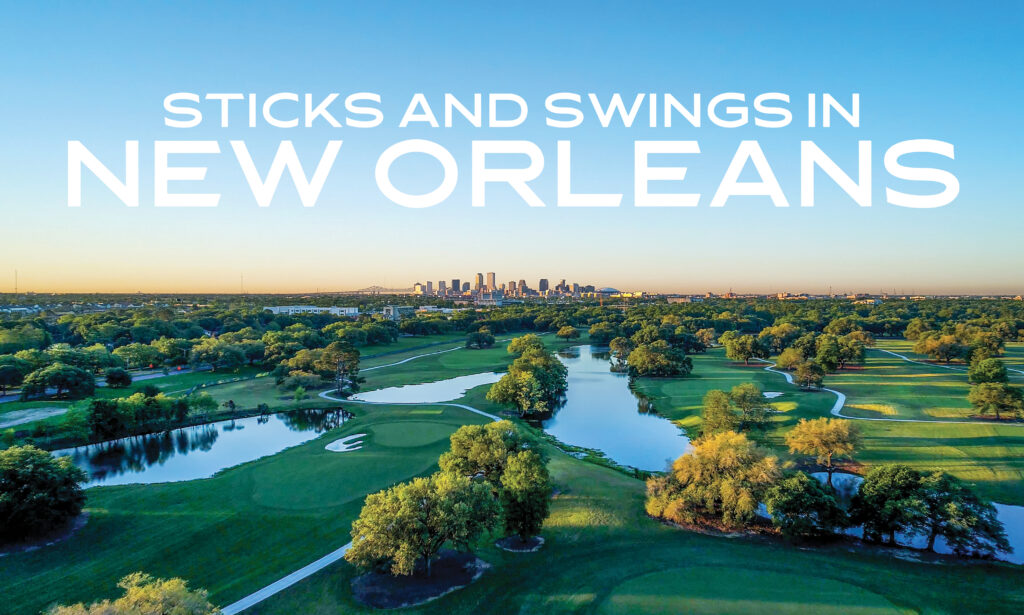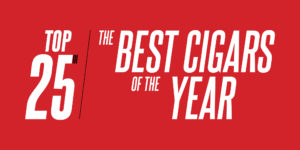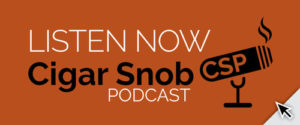Of course we all know it as a tourist and special event mecca pretty much without peer in the American South, but if New Orleans isn’t also considered one of America’s greatest and most fun towns for cigar lovers — and golfers as well — it should be.
The Crescent City’s relationship with tobacco goes back centuries, and today its cigar culture is alive and well thanks chiefly to those 78 square blocks of colorful, booze-soaked, cuisine-fueled and smoke-shrouded history known as the French Quarter.

A half-dozen top-notch cigar shops and bars dot the city’s oldest and most famous district, with several others well within a quick walking, streetcar or driving orbit. Some have outdoor patios for torching up; one boasts a large lounge that, back in the day, used to be part of a swanky bath house — a black-and-white photo on one wall shows a swimming pool where leather sofas and hand-carved tables now reside. Still others welcome expert rollers on the regular, artisans who turn fresh leaves into lovely Parejos and Figurados in minutes. Every walk-in or reach-in humidor is, without fail, stocked with as stout a selection of sticks as you’ll find anywhere in the nation, curated by folks who know how to pick ‘em and keep ‘em in top shape. Cut and light up that robusto or Churchill right there or bring your Cigar Caddy and load it up for whatever adventures await you while in Louisiana’s loving and lively arms — big food, deep drinks, boisterous bumping about with the buddies … and, of course, a round of golf here and there.
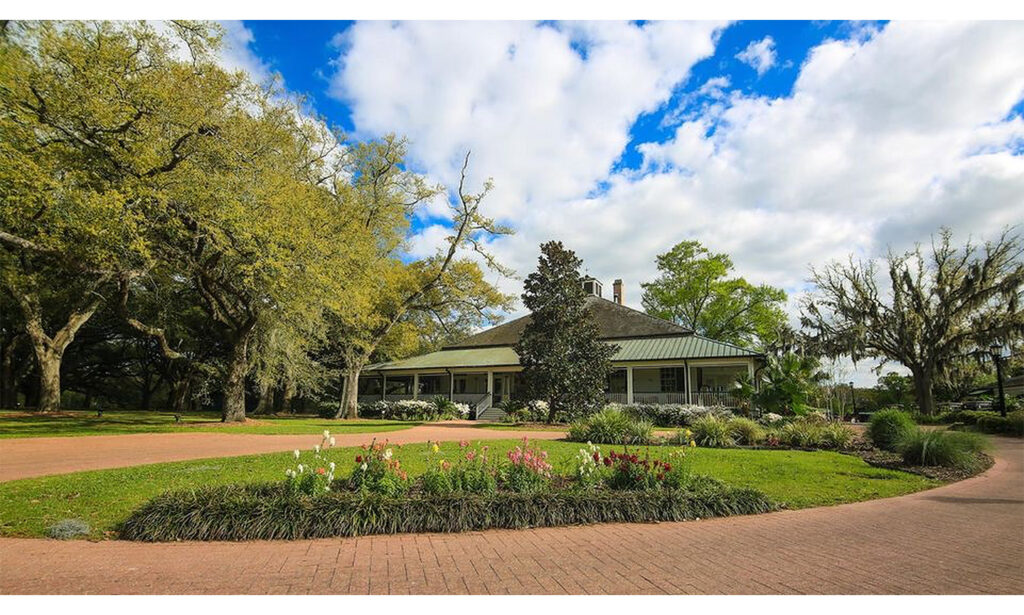
Ah, yes, cigars and swings: They go together like red beans and rice, especially when it comes to dude groups (or, sure, stogie-lovin’ couples) out for their annual weekend-or-more golf getaway. And while New Orleans might not be the first town that comes to mind when planning a tee-time-by-day, lounge-time-by-night itinerary, prepare to be enlightened to the Big Easy’s surprising array of courses in and near the city limits.

CUT AND FUN
Any conversation about lighting up in New Orleans should begin with three words: The Cigar Factory. A Decatur Avenue staple since 1999, it’s the only game in town — or the entire state of Louisiana — if you’re looking for made-in-house Maduros.
“We didn’t plan to be the only manufacturer, but somebody came into town, tried to open another cigar factory, and the state said, ‘We’re not issuing any licenses,’” said ownership partner David Sharruf, who opened his first cigar-making operation in San Diego’s Gaslamp District in the stogie boom of the early 1990s, followed by an outlet in downtown Vegas before setting his sights on the Gulf Coast (he also operates stores in Pensacola and Destin, Florida, plus a small retail-only store on Bourbon Street).
“So they said, ‘Why can he manufacture and we can’t?’ They took a look at it, told me I was grandfathered in, I’m the only one who will ever have a license — if you give it up there will never be another one issued.’ So, I’m not giving it up.”
Louisiana hasn’t always been so stingy with its cigar licensing. In fact, adds, Sharruf, “There’s a deep history of cigar making in New Orleans that most people don’t know about. Back in the late 19th century there were more than 130 cigar factories in the city — most were in the Quarter but some were in the Warehouse District.” Sharruf pays tribute to that history by maintaining a cigar museum at the rear of the Decatur Street outlet. “[Other museums and operators] come and borrow my museum pieces. I’m the only one who’s got the collection.”
New Orleans’ early cigar makers were predominantly Cuban, but these days Sharruf’s master rollers are mostly Dominicans. The fragrant, fresh leaf they use to roll 50,000 cigars per year, however, is procured from fertile soil across Latin America and as far afield as Africa.

“We manufacture four lines of cigars. One is called Social Club. That’s a blend of Brazil and Nicaraguan filler, a Brazilian binder. We do five different sizes in two different wrappers — a Connecticut wrapper from Ecuador or a Brazilian Maduro. The other three lines are one hundred percent Nicaraguan filler and binder. And we have three different wrappers; one is the Connecticut again, a broadleaf Maduro, and a Cameroon wrapper.”
The other lines are called Plantation Reserve, Tres Hermanos and Vieux Carre, in a variety of sizes and styles from Café to Rothchild, Torpedo to Churchill, Corona to Robusto.
Over its nearly 25 years on Decatur, The Cigar Factory has gained a large and loyal local client base, including policemen, firefighters and other first responders. “We probably get ten NOPD and a half dozen firefighters through the door every day,” Sharruf says. “And we offer 30 percent off to all military and first responders, with no minimum. In other words, if you buy a ten-dollar cigar, you get it for seven dollars.”
In other words, you and your golf buddies can fill your portable humidors with all the fresh sticks you need to enjoy on the links and beyond after “road testing” them right there in the presence of their creators.
“You can come in, hang out, smoke a cigar, watch the guys making them right there in the store, and just have a good time. And while we don’t serve alcohol, you can bring drinks in from the outside.”
New Orleans’ array of retail cigar shops boasts broad and deep inventories of the brands you love, and perhaps some you’ve yet to discover. Walk-in shops of all sizes and specialties abound throughout the Quarter, with a few notable spots elsewhere in the city.

Start a couple blocks north of the Cigar Factory, on Toulouse Street, where you’ll find Cuban Creations, home to the aforementioned former spa-pool that’s now a spacious, inviting, relaxing full-service cigar bar, complete with overstuffed chairs and sofas, cocktail and cigar table service, sports on big screens and, at just about any time of day but particularly in the late afternoon and evening, the echoes of laughter and celebration as couples and groups — wedding parties, bachelor and bachelorette bashes, serious and novice smokesters alike — settle in for a refreshing pause from the non-stop partying and bustle outside.
“We’re the only full-on cigar bar in the Quarter,” says Andrew Wilson, who has owned Cuban Creations since 2018 and who also has an ownership interest in The Bombay Club, a popular bar and small plate eatery with an outdoor smoking patio just a few blocks away. “At Bombay we have a good selection of cigars that you can purchase and take out to the patio, but here we have everything — full bar, walk-in humidor and the lounge in back, which is very popular.” It’s the last vestige of a time before most indoor smoking was banned in the New Orleans city limits in 2015.
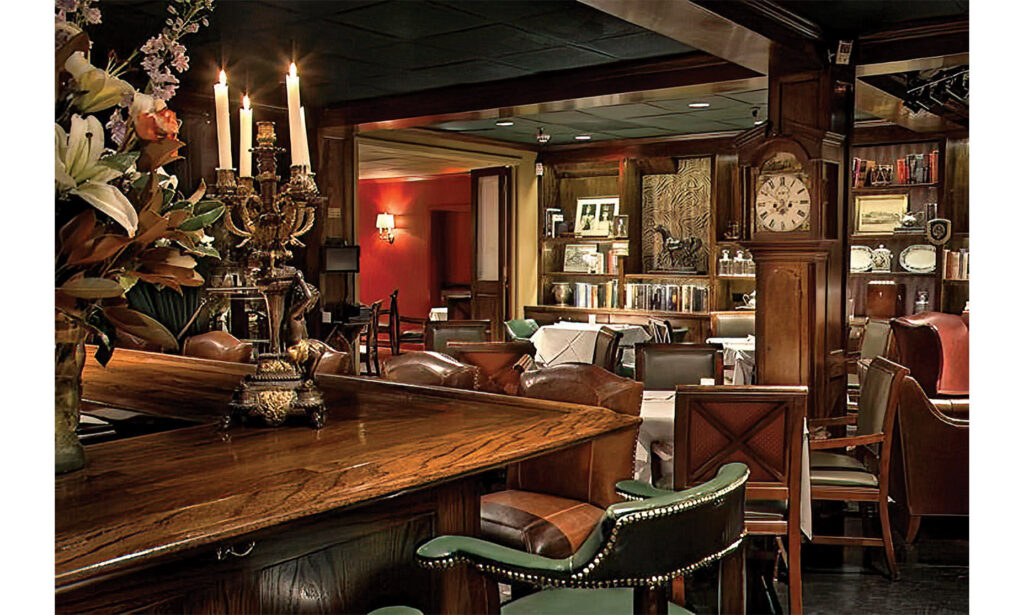
Like Sharruf, Wilson reveres this city’s cigar history. He learned how to take care of folks in Las Vegas as a casino marketing honcho with MGM Resorts. He also admired that town’s sophisticated cigar culture, and has carried some of it east, replacing the high roller vibe with a less glossy, more authentically New Orleans/Latin American feel.
Though Cuban Creations specializes in private events — definitely a plus, or a must, in a town like this — its public traffic is robust indeed. In a nod to its namesake nation, business spills out onto the street, with plenty of smokers hanging out on a covered patio Wilson put in place at the height of Covid restrictions. It would feel right at home in the pastel haunts of Havana. But step inside and you get that heady cultural mix so endemic to NOLA. It’s both a classic, friendly French Quarter bar, well-stocked with spirits familiar and rare (including a stout selection of single malts, bourbons and ryes), plus a sampling of Wilson’s own sports memorabilia collection. To the right is the walk-in humidor loaded with an expansive selection. Scout the stick that suits your fancy, and a knowledgeable, personable server will bring it to you at the bar, where you’ll find a cutter and torch within easy reach, or in the columned, high-ceilinged lounge itself, decorated, again, in a mix of Havana color and Romanesque grandeur. Snag an antique domino table in a corner, light up, sit back and take it all in as you imagine yourself hanging out in the Buena Vista Social Club.
Keep strolling the narrow Quarter boulevards in any direction and you’ll catch just the right whiff:
Crescent City Cigar Shop on Orleans St. — The “largest walk-in humidor in the French Quarter.”
Don Leoncio Cigars Bar — Actually just outside the Quarter proper on Canal St., a block from the popular, free and fascinating Sazerac Museum (more on that in a minute).
La Habana Hemingway Cigars — Wedged between two taller Bourbon St. buildings, right in the middle of all the raucous action.
Smoke on the Water Cigars, Conti St. just behind the New Orleans Visitors Center — A half-block from the Factory, narrow but inviting with a cool back patio.
The city beyond the Quarter has plenty of smokin’ charms, as well:
Don Villavaso on the Bayou, just off Esplanade Ave. — Located close to City Park and its wealth of museums and green space including a golf course, this spot boasts spacious outdoor seating for smoking, sipping something from the whiskey bar or ordering a nosh from the food menu.
Whiskey & Sticks, Bayou Rd. near Esplanade — Another good place to convene after playing Bayou Oaks at City Park South Course. The name says it all. They host a trivia night and DJ’d music on occasion.
Mayan Import Co. — Two locations: On Magazine St. in the Garden District and in Metairie, not far from the city’s new Louis Armstrong International Airport. They pride themselves on offering not only the city’s largest inventory of cigar brands and smoking accessories, but “the best of New Orleans architecture, history and ambiance.” Both locations offer indoor smoking lounges and outdoor patios. Big bonus — They’re open every day.
Dos Jefes Uptown Cigar Bar, Tchoupitoulas St. — In New Orleans, going “uptown” means heading south to the area of West Riverside, Audubon (home to another golf course) and Tulane University. If you want to take in some top-shelf live jazz along with your smooth smoke, this is the place. It’s the living, breathing definition of a smoke-filled Crescent City jazz joint, with top name acts taking the stage most nights of the week.
DUFFIN’ AND PUFFIN’
Now that you’re armed with your favorite cigars, it’s time to go to glorious battle with Old Man Par. As ground zero for Louisiana’s recently refreshed roster of golf and culinary, craft beer, distilleries, music, fishing, or whatever trails (www.louisianagolftrails.com offers a slew of recommended itineraries, or you can build your own), New Orleans is the place to start a statewide golf jaunt, or just stay put for a week to swing, soak and smoke it all up.
Within an easy drive of the city’s compact core are three excellent tracks.
In 2017 architects Rees Jones and Greg Muirhead redesigned Bayou Oaks at City Park’s South Course with a new routing, bunkers and greens while maintaining its classic wide-open feel. Fairways are generous but old-growth trees can block out an errant drive. Water features sneak into play at the right spots and frame greens well even when they’re well away from shot lines. It’s no pushover and, in true New Orleans form, attracts all kinds — weekend hackers, straight-shooting regulars, sandbaggers, even Super Bowl-winning NFL coaches like Sean Payton, recently spied going deep into a friendly match with his buddies on the 17th hole. A shorter North Course reopened in 2008 after some post-Katrina repairs. Current weekday rates range from $90-$147, but last-minute deals are often available. Check ezlinks.com for the latest.
Par-62 Golf Course at Audubon Park is the only course in America where you can take a streetcar pretty much to the first tee, straight down St. Charles Avenue from the hotel-studded Warehouse and Financial districts (or the Quarter just beyond). The Denis Griffiths design packs a lot of action into 4,200 yards — tricky bunkering and small push-up greens that are always in great shape. Visit www.audubonnatureinstitute.org/golf for the latest rates.
But at the top of most New Orleans-bound golf groups is TPC Louisiana, an upscale and fully public showcase just across the river in Avondale. Home to the PGA Tour’s one regular team event, the Zurich Invitational, it honors the late Pete Dye’s genius for transforming otherwise unremarkable terrain, in this case a former swamp, into something special. With input from Tour Player Consultants Steve Elkington and Kelly Gibson, Dye conjured a stirring and scenic test out of the bayou, flexing his fool-the-eye muscle from hole to water-lined hole.
The signature Dye touches glow like the cherry on a well-made Double Corona: Bunkers from tiny to sprawling; mounding that visually nudges you toward the narrower side of a fairway, which actually opens up the hole for the approach; greens that seem relatively benign at first glance, until you’re scratching your head at that three-jack or counting your blessings that you avoided it; and a routing that builds the drama as you go.
The head pro calls the par-4 13th his favorite, and it’s hard to argue — huge bunker between tee and green, a lone tree at the dogleg that visually separates gamble from safe shot, and a green that just begs you to go for it. After the mid-distance par-3 14th, it’s crunch time. No. 16 only plays 355 yards from the tips and 312 from the whites, but water lurks, barely in view, in dead-away left-centerfield, with no bailout left and a big bunker dead-away; you might bite that stick between your lips a little harder before taking aim at the green with the club in your hands. Holes 17 and 18 are true Dye delights — a classic green-on-a-cliff par 3 with railroad tie buttresses and water all up the left side and the par 5-finisher with a swizzle stick-shaped sand hazard separating grass from a big lake on the right and a well-bunkered layup zone left. Whether you can carve a cut on the approach will determine whether you go for it or lay back and lean on your wedge.
TPC’s clubhouse is spacious and well-appointed, with a big grillroom and stellar views of the course, especially the lovely par-3 9th. Save a stick for the 19th hole, grab a table outside if the weather’s amenable, and replay your duel with your buddies (and Pete) on one of the state’s best layouts. Non-resident greens fees start around $220 depending on season.
Another top-ranked New Orleans course and a former Tour stop, Jack Nicklaus’s English Turn, is private, but you can snag a tee time by staying in one of the property’s golf villas. Some non-resident tee times are also available via EZ Links; recent morning rates started at $89.

Care to expand your Louisiana Golf & Smoke/Eat/Drink/Enjoy horizons beyond New Orleans proper? You don’t have to drive far to rack up worthwhile rounds in Baton Rouge, on the north shore of Lake Pontchartrain or south of the city in the Atchafalaya Basin.
DUFFIN’ AND PUFFIN’
Now that you’re armed with your favorite cigars, it’s time to go to glorious battle with Old Man Par. As ground zero for Louisiana’s recently refreshed roster of golf and culinary, craft beer, distilleries, music, fishing, or whatever trails (www.louisianagolftrails.com offers a slew of recommended itineraries, or you can build your own), New Orleans is the place to start a statewide golf jaunt, or just stay put for a week to swing, soak and smoke it all up.
Within an easy drive of the city’s compact core are three excellent tracks.
In 2017 architects Rees Jones and Greg Muirhead redesigned Bayou Oaks at City Park’s South Course with a new routing, bunkers and greens while maintaining its classic wide-open feel. Fairways are generous but old-growth trees can block out an errant drive. Water features sneak into play at the right spots and frame greens well even when they’re well away from shot lines. It’s no pushover and, in true New Orleans form, attracts all kinds — weekend hackers, straight-shooting regulars, sandbaggers, even Super Bowl-winning NFL coaches like Sean Payton, recently spied going deep into a friendly match with his buddies on the 17th hole. A shorter North Course reopened in 2008 after some post-Katrina repairs. Current weekday rates range from $90-$147, but last-minute deals are often available. Check ezlinks.com for the latest.
Par-62 Golf Course at Audubon Park is the only course in America where you can take a streetcar pretty much to the first tee, straight down St. Charles Avenue from the hotel-studded Warehouse and Financial districts (or the Quarter just beyond). The Denis Griffiths design packs a lot of action into 4,200 yards — tricky bunkering and small push-up greens that are always in great shape. Visit www.audubonnatureinstitute.org/golf for the latest rates.
But at the top of most New Orleans-bound golf groups is TPC Louisiana, an upscale and fully public showcase just across the river in Avondale. Home to the PGA Tour’s one regular team event, the Zurich Invitational, it honors the late Pete Dye’s genius for transforming otherwise unremarkable terrain, in this case a former swamp, into something special. With input from Tour Player Consultants Steve Elkington and Kelly Gibson, Dye conjured a stirring and scenic test out of the bayou, flexing his fool-the-eye muscle from hole to water-lined hole.
The signature Dye touches glow like the cherry on a well-made Double Corona: Bunkers from tiny to sprawling; mounding that visually nudges you toward the narrower side of a fairway, which actually opens up the hole for the approach; greens that seem relatively benign at first glance, until you’re scratching your head at that three-jack or counting your blessings that you avoided it; and a routing that builds the drama as you go.
The head pro calls the par-4 13th his favorite, and it’s hard to argue — huge bunker between tee and green, a lone tree at the dogleg that visually separates gamble from safe shot, and a green that just begs you to go for it. After the mid-distance par-3 14th, it’s crunch time. No. 16 only plays 355 yards from the tips and 312 from the whites, but water lurks, barely in view, in dead-away left-centerfield, with no bailout left and a big bunker dead-away; you might bite that stick between your lips a little harder before taking aim at the green with the club in your hands. Holes 17 and 18 are true Dye delights — a classic green-on-a-cliff par 3 with railroad tie buttresses and water all up the left side and the par 5-finisher with a swizzle stick-shaped sand hazard separating grass from a big lake on the right and a well-bunkered layup zone left. Whether you can carve a cut on the approach will determine whether you go for it or lay back and lean on your wedge.
TPC’s clubhouse is spacious and well-appointed, with a big grillroom and stellar views of the course, especially the lovely par-3 9th. Save a stick for the 19th hole, grab a table outside if the weather’s amenable, and replay your duel with your buddies (and Pete) on one of the state’s best layouts. Non-resident greens fees start around $220 depending on season.
Another top-ranked New Orleans course and a former Tour stop, Jack Nicklaus’s English Turn, is private, but you can snag a tee time by staying in one of the property’s golf villas. Some non-resident tee times are also available via EZ Links; recent morning rates started at $89.
Care to expand your Louisiana Golf & Smoke/Eat/Drink/Enjoy horizons beyond New Orleans proper? You don’t have to drive far to rack up worthwhile rounds in Baton Rouge, on the north shore of Lake Pontchartrain or south of the city in the Atchafalaya Basin.
BEDDING DOWN
New Orleans rolls out the lodging buffet like few other American cities. There are French Quarter favorites like Hotel Monteleone with its famed Carousel Bar, corporate high-rises along Canal Street or in the Financial District, funky hideaways Uptown, and chain outfits near the airport. But what might be the most golf-friendly venue of all is located right across the street from the National WWII Museum, walking distance from the Quarter and waterfront and a half-hour-max drive from all four main New Orleans courses.

Owned by the museum, operated by Hilton under its refined Curio brand, and named for a New Orleans industrialist who built boats for the war, Higgins Hotel offers 230 rooms and suites on the edge of the Warehouse District, blocks from the Caesars Superdome and a short walk to restaurants like Cochon and all-world saloon The Rusty Nail. You can catch the Saint Charles streetcars at Lee Circle, with the Lower Garden District to the southwest and the Quarter to the northeast. The rooms are decorated with vintage WWII photos. The food at Higgins is first-rate, with Chef de Cuisine Virgile Brandel conjuring pure magic out of Café Normandie’s kitchen — straightforward but cut-above breakfast dishes, dinner specials like Pan-Seared Redfish with Maitake Mushroom, Leeks Fondue and Horseradish Crème Fraiche, Stuffed Quail with bourbon molasses and kumquat marmalade, and a “Floating Island” dessert that’s somehow both rich and light. Rosie’s on the Roof (for Rosie the Riveter) on the top floor gives way onto a rooftop patio boasting 270-degree views of the city skyline, including the Superdome; it might be the city’s outdoor smoke-and-sip sleeper. Louisiana sunsets are free for the ogling.

EATING UP
New Orleans is home to 1,300 restaurants, and it’s easy to assume that all of them are, in some sense, above average; if you don’t put out solid fare from that kitchen, you won’t hang around long.
If you’d rather stick with the tried-and-true, the big names are there, in various parts of town. Commander’s Palace in the Lower Garden. Emeril’s between the Waterfront and the Financial District. Brennan’s in the Quarter. All are great. But there are other names, both well-established and up-and-coming, that deserve a look and a taste.

Pêche is the hottest seafood spot in the Warehouse District, two blocks from the Higgins. With the Mississippi River right there and the Gulf of Mexico an hour or so south, fresh fish and shrimp are part of New Orleans’ culinary bone structure, but the chefs at this open-format, bustling spot find ways to brighten traditional methods and presentations while breaking new ground (water?) of their own, drawing inspiration from South America and Spain as well as the Gulf Coast. Chef Ryan Prewitt won a James Beard Foundation Award for Best Chef: South in 2014. Standout dishes include the fish sticks with urban south beer batter appetizer, classic seafood gumbo, baked drum with mushroom broth and calas. There are a couple of “whole table” options — whole grilled fish fileted tableside and a 22 oz brasstown ribeye. Don’t forget the brussels sprouts with chili vinegar. Or the pepper-infused hush puppies.
Pascal’s Manale in the Lower Garden District, a couple blocks off the St. Charles streetcar line, is a family-owned in-the-know gathering place for more than a century. Its signature dish is the best barbecued gulf shrimp in creation, though its combination pan roast, fried oysters and key lime pie are winners too. Dozens of framed photos of actors, politicians and other notables in the bar announce this local joint’s bona fides, but savvy visitors know their way here; Pierce Brosnan was recently spotted at a corner table while filming a movie in town.
Down French Quarter way there’s always Brennan’s for dinner (several locations run by various family members), Court of the Two Sisters on Royal Street for a Southern-flavored brunch (everything from made-to-order omelets to shrimp and grits to king cake), and the original Café du Monde for beignets and café au lait.
TAKING IN THE SIGHTS & SOUNDS

Originated as the National D-Day Museum, the WWII Museum has since grown into one of the most impressive, well-curated and well-designed historic showcases — or museums of any kind — in the United States. Every exhibit elicits emotions that you didn’t realize you had.
The journey begins on a replica of trains that carried soldiers to boot camp, and the visual and visceral drama just builds from there. You’re immersed in the horror and valor of Omaha Beach and the entire D-Day campaign, then the lens widens to encompass the war’s every major battle and development on the Pacific, European and North African fronts, enhanced with personal stories portrayed through multimedia via a digital “draft card.” It all crescendos with a stirring and heartbreaking section dedicated to the atomic bombs dropped on Hiroshima and Nagasaki, and the political and military decisions that precipitated them. The U.S. Freedom Pavilion: The Boeing Center is a high-flying thrill, with full-sized bombers and fighters suspended from the ceiling and multimedia displays filling us in on the brave pilots and commanders connected to each vessel. The museum’s latest addition is “Beyond All Boundaries,” a 45-minute “4D” movie experience narrated by Tom Hanks, and construction is underway on a new “Peace Pavilion” and an exhibit dedicated to the Holocaust.

At the corner of Canal and Magazine streets, and designed by the same folks who did the WWII juggernaut, is the Sazerac House Museum, which deftly pays tribute to the city’s fascinating cocktail culture, from the old rum distillery days, through the speakeasies of Prohibition, to today’s booze-fueled craft cocktail renaissance. There’s a working distillery onsite, stations for sampling famed cocktails such as the rye-based Sazerac and bourbon-based Teresa, virtual bartenders mixing up those drinks and others, and a huge retail area selling every brand of spirits in the house, from Buffalo Trace bourbon to Myers’s Rum to liqueurs and special stuff like Herbsaint (a fragrant stand-in for absinthe) and Peychaud’s Bitters. Sazerac’s place in New Orleans’ spirits scene dates back two centuries. If you’re given to enjoying an expertly concocted libation alongside that beautifully rolled Robusto — and who isn’t? — it’s a must.
Want to take a Mississippi riverboat cruise or bayou fan boat foray with your favorite cigars at the ready? No problem. Do the hardcore tourist thing with a cemetery, ghost or pirate tour? Sure. Take in a live sporting event? Hell yes. This is New Orleans, man!
Sensory delight abounds in the music realm, too, with all the jazz-blues-Creole-Cajun-ragtime-rockin’ delicacy that hangs on the palate in a stew of styles no other American city can match. Mardi Gras never ends in certain pockets of the city. Jazz bands fill the heady French Quarter air year-round, bar bands crank it up as the sun descends, and music festivals large and small crowd the calendar. Pick a month or even a certain week, and your musical appetite is sure to be sated.
Same for your cigar, golf, fine food and flat-out fun appetites, in the other city that never sleeps — and will forever be friendly to fans of the leaf.
“Things are just more open down here,” said David Sharruf. “It’s getting to the point you can’t smoke anywhere, but hey, this is New Orleans, a town that was established by thieves, slaves and pirates. They’ve changed a lot but they’re not going to change everything, and there’s no place like it.”
Got that right. Let the good times — and the good smokes — roll.

